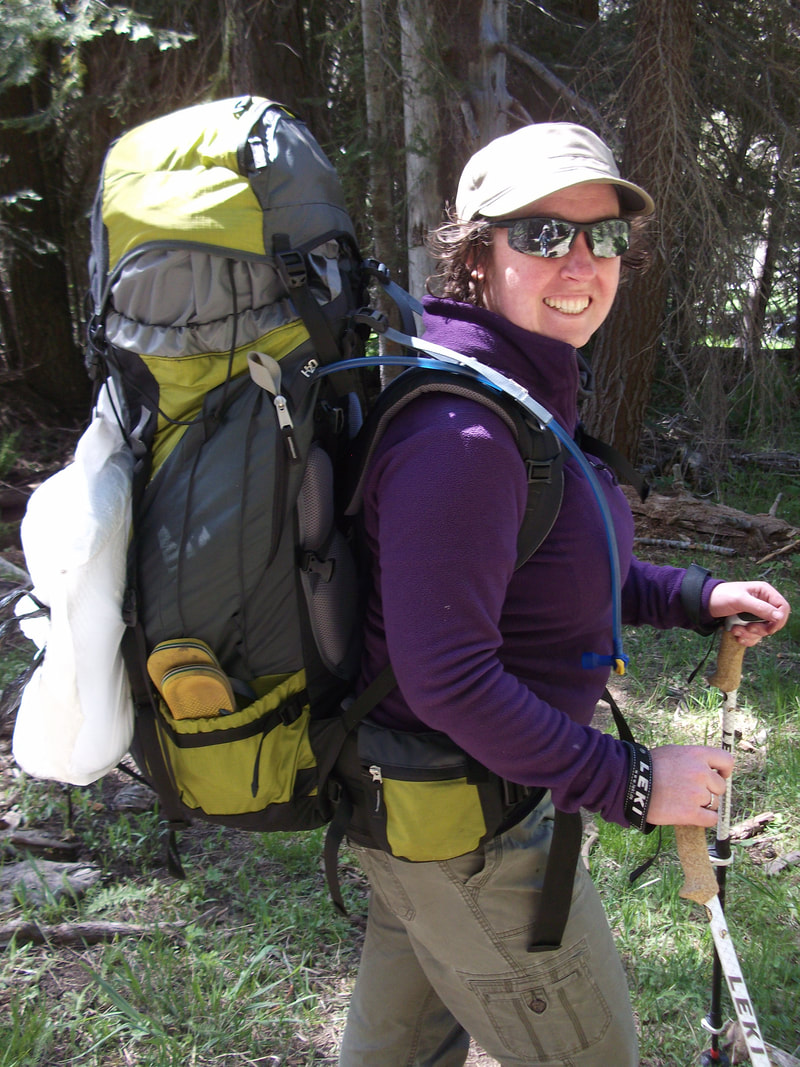As a definition, life influences the water cycle, and the water cycle in turn influences life. Put those feedbacks together and you have a complex dynamic system which will create surprising and intricate behavior that is both fascinating to learn about, and important for the world. Yay – ecohydrology is so much fun!
On a more personal level, I got into ecohydrology because of the change in hydrology in the Western Australian landscape (my home!) that occurred after native vegetation was cleared for agriculture. Crops used less water than Australian native plants, and recharge increased, bringing deep and saline groundwater close to the land surface. This so called “dryland salinity” is now a major threat to agriculture, ecosystems, water systems, infrastructure and even human physical and mental health. It used to break my heart to see the bushlands I love deterioriating as salt poisoned them. For me, ecohydrology remains personally tied to the exciting idea of solving this problem by strategically planting trees to restore the pre-clearing hydrology without compromising farmer livelihoods – a fundamentally ecohydrological problem of landscape engineering with vegetation… a hard, fascinating, important problem.
What are your undergraduate and graduate degrees in?
Undergraduate degrees in Environmental Chemistry and Environmental Engineering, from University of Western Australia.
A PhD in Environmental Science, from Duke. Hat tip to the wonderful Gaby Katul for being the best research adviser ever. Seriously, do your PhD with Gaby!
How did you arrive at working in/thinking about ecohydrology?
I was really emotionally engaged with the dryland salinity problem I mentioned above, and did my senior thesis on this topic. I found the notion that we could manipulate vegetation deliberately at landscape scales to address environmental challenges to be tremendously exciting – I still do! This seemed like real ecological engineering to me (apologies to those who consider ecological engineering to involve manipulating communities of microbes). I then moved into thinking more about desertification and the links between vegetation spatial distributions and overland flow in drylands – a topic my group still works on today. Other topics – from stomata to landscape scales – followed thick and fast.
What do you see as an important emerging area of ecohydrology?
I think the links between ecohydrology and critical zone science are fascinating and will likely blossom in the next decade or two, as the critical zone concept becomes ever more established as a way to integrate disciplines in a common physical zone. The importance of the subsurface (at a minimum in terms of how it stores and transmits water) for plant health and physiology is in some ways obvious – yet strangely often neglected in ecophysiological studies. Similarly, this implies that plants will respond in interesting ways to different subsurface environments, meaning that if we could look critically at what plants are doing, we might be able to get large-scale insights into hard-to-observe features of the subsurface at management relevant scales.
Do you have a favorite ecohydrology paper? Describe/explain.
I really do love and retain a very soft spot for the work Kelly Caylor, Todd Scanlon and Ignacio Rodriguez-Iturbe did on vegetaion spatial organization in river basins in the early 21st Century – e.g. their GRL paper "Feasible optimality of vegetation patterns in river basins." (Geophysical Research Letters 31, no. 13 (2004)) is a little gem. I was reading this and related papers as I was applying to grad school and I got very excited about the ideas. I also was convinced at the time that Kelly Caylor was a woman (who, in my pre-doctoral mind, was going to be a tremendous role model for me!), and I have never truly forgiven him for turning out to be otherwise (Kelly, is of course a great role model, his disappointing gender nonwithstanding.)
What do you do for fun (apart from ecohydrology)?
I have two very young kids, so mostly for fun I daydream about the fun things I would do if I wasn’t changing diapers, wiping noses and crawling around the floor pretending to be a cat. Those things include learning to stand up paddleboard, joining a choir, swimming 3 times a week, going snorkeling with whale sharks, going up in a hot air balloon, visiting the South Pacific Islands, and, of course, the ever popular “sleeping for eight uninterrupted hours in a night”. One day I hope to do at least some of these fun things. For now, my cat impersonation is pretty much the highlight.

 RSS Feed
RSS Feed